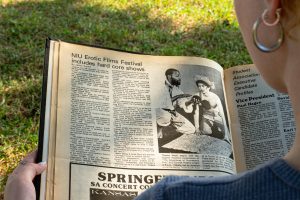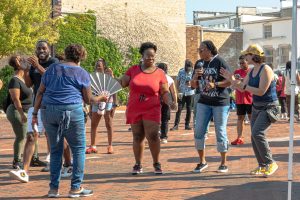‘Vision’ statement for NIU debated by FS
February 7, 1991
After about 90 minutes of debate, the Faculty Senate made a motion that conveyed “strong reservations” against a statement to reflect goals for the next century.
Many faculty members were of the opinion that the “vision” statement created by a select committee sees the future of NIU in a different light than the faculty.
Public Administration professor Bill Monat said, “I don’t see a vision. My reaction is, what else is new?”
Philosophy professor Sherman Stanage said that one of his first sermons as a minister was about how people perish when there’s no vision.
“If this statement remains as our vision, we’ll surely fail as a university,” Stanage said.
“Let the provost make his own statement,” said law professor Rodolphe De Seife, who wondered why the Senate should be mouthpiece of the administration.
Julie Scarborough, of the department of technology, who was on the committee that drafted the statement, defended it by saying that “every issue was addressed over and over. They (the faculty) were well represented on the committee.”
Committee member Norman Magden also defended the statement, saying he understood it as a general outlook and that it was to be targeted towards a large university.
The statement was created at the request of NIU President John La Tourette to commemorate the second century of NIU’s existence, when NIU observes its centennial starting in 1995. It was designed to give the school a vision for the future.
The committee, which was made up of faculty and administration members selected in 1989, met several times to discuss future demographics of NIU and their plans for the future.
Sociology professor Eleanor Godfrey said there was too much disagreement on the statement about NIU’s future.
“We cannot get a shared vision everyone can buy into, so we recommend we don’t publish one,” she said.
“We want a statement to say what we want to do in the future, and not the pipe dreams of administrators who have no commitment to school as an institution of higher learning,” said Art Professor Lou Mustari.






